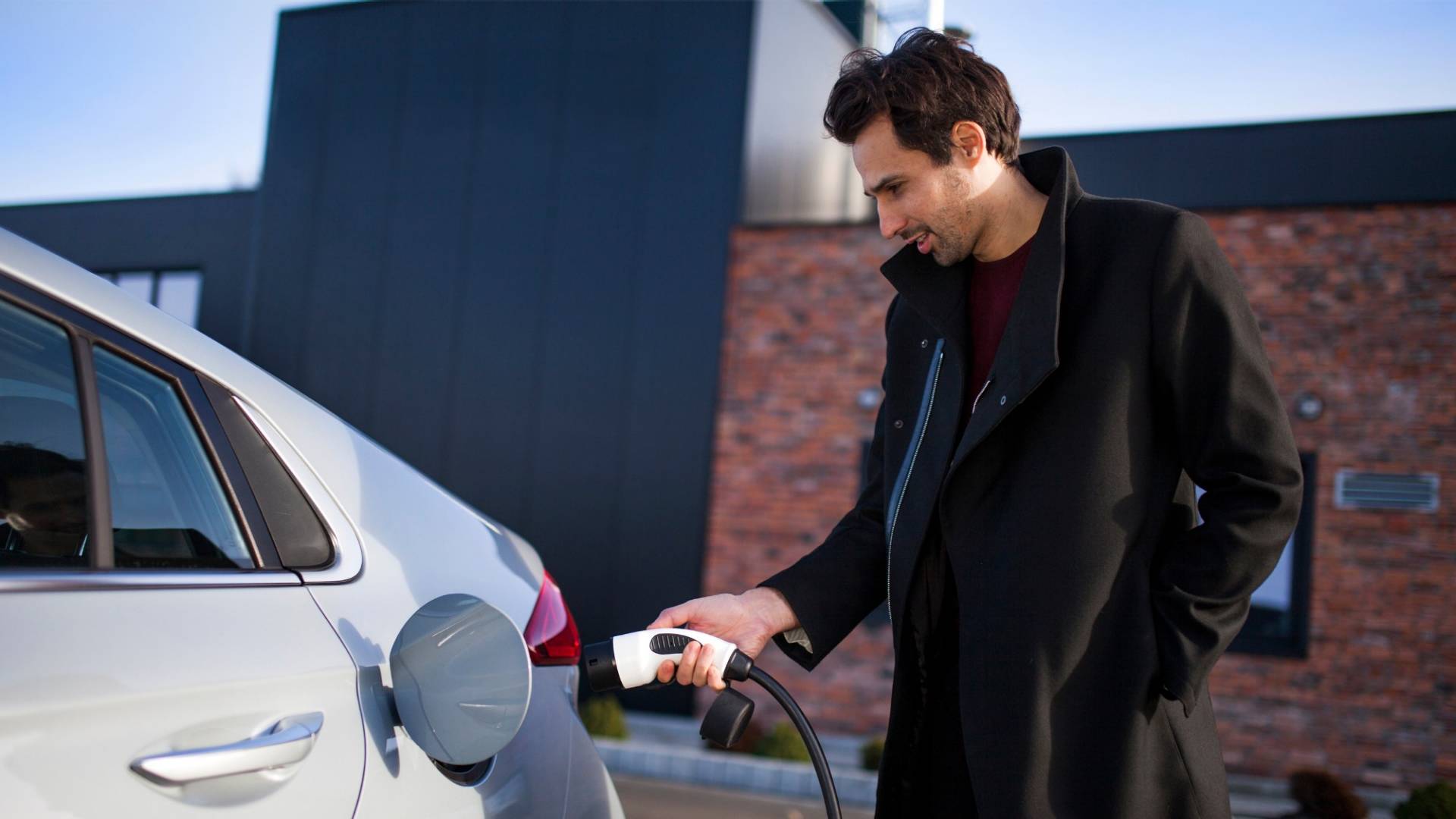-
Electric car charging station at home
24.08.2021 | Simon GantnerEVs and plug-in hybrids are becoming ever more popular. The key question is: should I invest in my own charging station at home? And what will it cost me? In some cases, the next public charging station may be several kilometres from home. Helvetia explains how you can recharge your EV at home.

Electric car charging station at home

Is it worth having my own charging station for my e-car?
Theoretically it is possible to recharge your e-car at an ordinary power point. But it isn't practicable and has some disadvantages. It can take up to 15 hours to fully recharge your vehicle. It also puts a constant strain on the electrical wiring, which at worst can result in a fire through overheating.Theoretically it is possible to recharge your e-car at an ordinary power point.
For those who take e-mobility seriously and don’t want to be dependent on public charging stations, a home charging station or wall box is the way to go. It saves you both time and the trip to the public charging point. Every wallbox charger is equipped with an electric vehicle charge controller. In tandem with the vehicle itself, this device monitors and controls the charging process. The biggest advantage of a wallbox charger is that it can recharge an EV around 4.5 times faster than a household power point. The EV's charging cable connects directly to the wallbox, and it is safe and convenient to let your vehicle recharge overnight. The next day, your EV is fully charged and ready to drive away.
Buying and installing your own wall box
Plug type 1 or 2? 11 or 22 kilowatts? The EV market is booming, which is why there is already a plethora of different charging stations. With so many options to choose from, it's difficult to get a clear overview. So, it's worth obtaining professional advice on the model that's right for you. But, even once you've purchased a wallbox charger, your work is far from over. There are costs involved in installing a wall box:
- Like a stove or washing machine, a wallbox charger requires a power supply with three-phase AC voltage.
- Before the wallbox charger is installed, you require approval from your local electric power utility.
- Only electricians with a corresponding permit are allowed to install wallbox chargers.
What does your own wall box cost?
The cost of the convenience of having your own charger depends on the technical specifications as well as on the time needed for the installation.
How is the wall box insured against damage?
Given the total cost of buying and installing a wallbox charger, it makes sense to insure it. That is why Helvetia has developed supplementary insurance for wallbox chargers, covering, e.g. damage due to:
- Unintentional incorrect operation that damages the internal workings of the charger
- Malicious damage / vandalism by third parties
- Bites and consequential damage caused by martens or rodents
- Theft
- Short circuits, overvoltage or overcurrent
- Impact of foreign bodies








